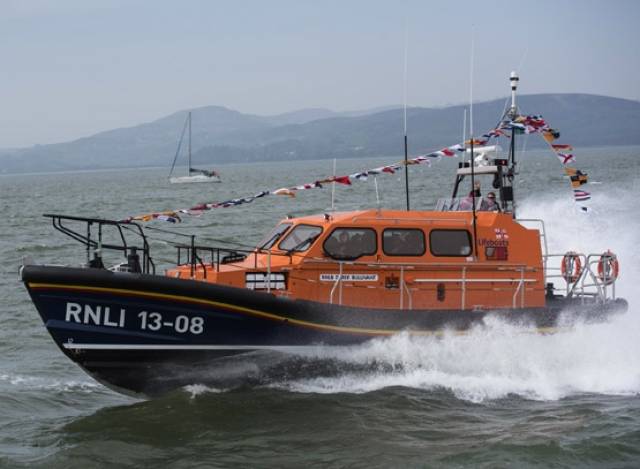#RNLI - Arklow man and former lifeboat operations manager Jimmy Tyrrell will have the honour of naming the first class of RNLI lifeboat to be named after an Irish river this Saturday 25 June in Buncrana, Co Donegal.
Lough Swilly RNLI will hold the special naming ceremony and service of dedication from 11.30am to officially name the first Shannon-class lifeboat in Ireland, Derek Bullivant.
The Donegal lifeboat station was the first in Ireland to receive the new €2.4 million lifeboat, which is the most modern and technically advanced lifeboat in the RNLI fleet.
Shortly after its arrival on station, the lifeboat brought three local fishermen to safety after they had been reported missing when their vessel had lost power and drifted out to sea.
The lifeboat was funded by legacies from Derek Bullivant and Valerie Walker. Bullivant was born in Birmingham in 1922 and was a trained chemist before working as an industrial analyst for a company in the metal industry. He went on to start his own company which became one of the biggest aluminium recycling companies in the UK. He always wanted his success to benefit lifesaving and humanitarian charities which led him to provide a generous legacy which helped to fund the Lough Swilly lifeboat.
The second legacy was bequeathed from Valerie Walker from Portsmouth. Walker was a supporter of the RNLI and her legacy has been used to part fund the lifeboat. Her generosity will be remembered and acknowledged by a plaque which will be placed in the boathouse at Lough Swilly lifeboat station.
The Shannon is first class of lifeboat to be propelled by water jets instead of traditional propellers, making it the most agile and manoeuvrable all-weather lifeboat in the fleet.
Waterjets allow the vessel to operate in shallow waters and be intentionally beached. The lifeboat has a top speed of 25 knots and a range of 250 nautical miles, which makes it ideal for offshore searches and rescues in calm and rough seas.
The new lifeboat was developed to operate in the worst of sea conditions and is self-righting, automatically turning the right side up in the event of a capsize. Its unique hull is designed to minimise slamming of the boat in heavy seas and the shock-absorbing seats further protect the crew from impact when powering through the waves.
Commenting on the forthcoming occasion, Lough Swilly RNLI lifeboat operations manager John McCarter said: "Many people will know that we welcomed the lifeboat to Buncrana a little over a year ago but in grand RNLI tradition we officially name and dedicate the lifeboat after that and in doing so remember our generous benefactors who through their legacies have provided this incredible gift to our community.
"We are delighted that Jimmy Tyrrell will be officially naming our lifeboat. Our colleagues in the lifeboat community will know that Jimmy lobbied the RNLI for years to have a class of lifeboat named in recognition of the role Ireland and Irish lifeboat volunteers have played in the work of the charity for 192 years. All other lifeboat classes are named after UK rivers so the Shannon is truly an Irish lifeboat."
The Shannon lifeboat also has another strong Irish connection. Peter Eyre, an RNLI engineer from Derry who works at the charity’s headquarters in Poole, was instrumental in the development of the new lifeboat, designing the hull form at the age of 24.
The first all-weather lifeboat put on service in Lough Swilly was The Good Shepard in 2000.































































